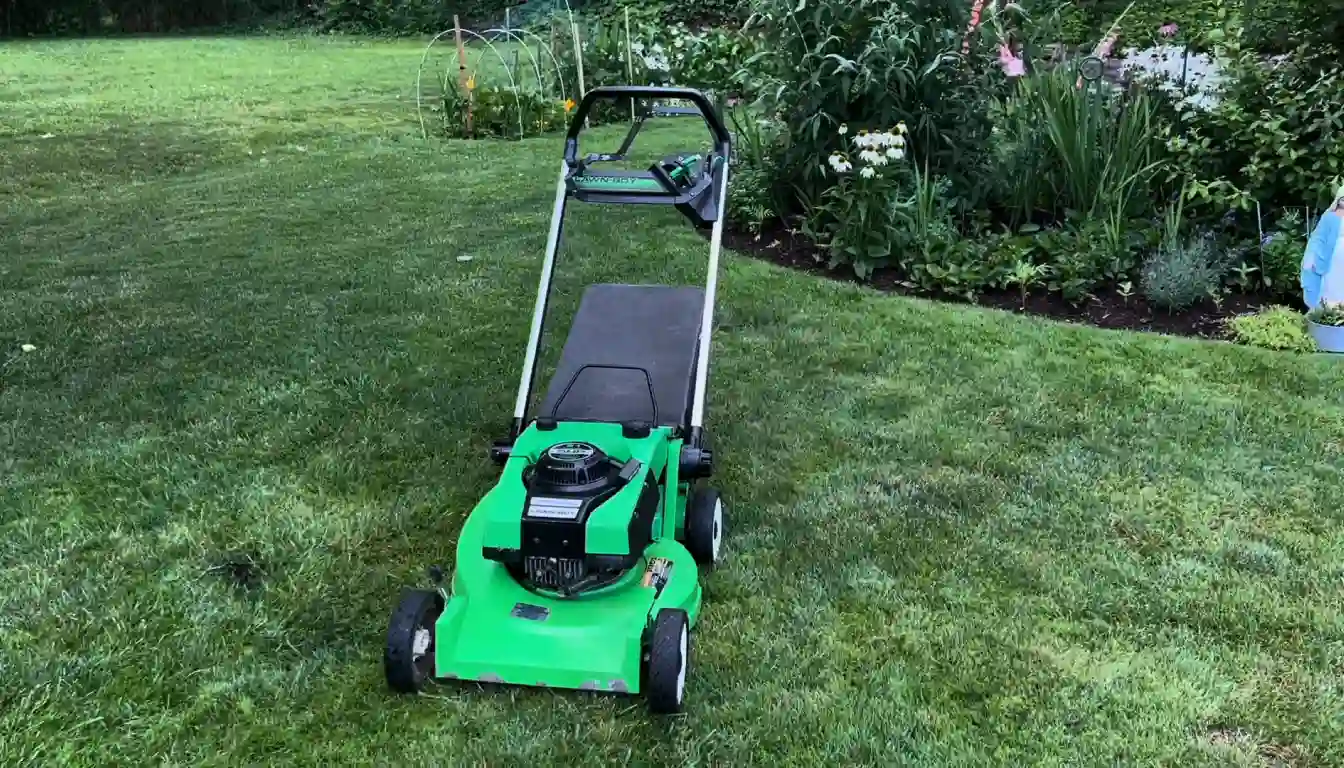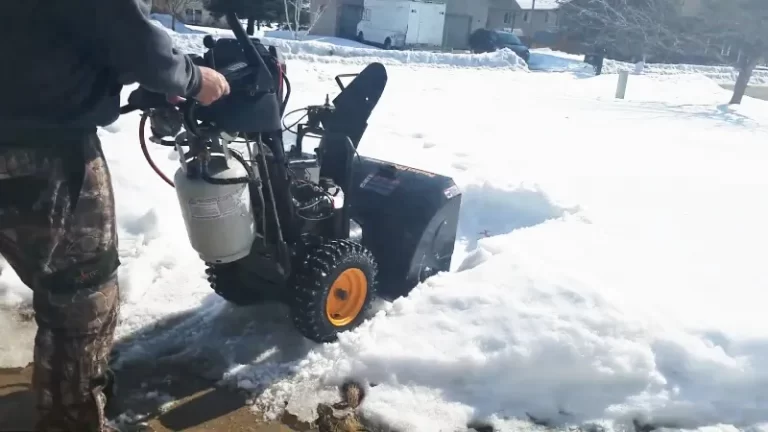The Lawn Boy M-Series Secret: Why This “Flawed” Mower is a Hidden Gem
In the history of lawn care, few machines evoke as much passion and frustration as the Lawn-Boy M-Series. Produced for a short time around the late 1980s and early 1990s, this mower was an ambitious leap forward in technology and design. Yet, for many, it became a symbol of over-engineering and mechanical headaches.
This article dives deep into the world of the M-Series, exploring the core problems that gave it a challenging reputation and providing a comprehensive guide to bringing one back to life. This isn’t just a mower; it’s a piece of history that, with the right knowledge, can still be a remarkable machine.
You'll Learn About
The Legendary Lawn Boy That Time Forgot: What Was the M-Series?
The M-Series was a marvel of its time, representing the pinnacle of design from Outboard Marine Corporation (OMC) before its sale to Toro. It boasted features that were futuristic for a walk-behind mower, including a powerful 2-stroke engine with oil injection, a lightweight and corrosion-resistant magnesium deck, and advanced safety switches.
Engineered to be a premium machine, it featured a robust three-speed transmission, a blade brake clutch (BBC) on some models allowing the engine to run without the blade spinning, and thoughtful ergonomics like internally routed cables for a clean look. These mowers were a bold statement, aiming to deliver a superior cutting experience.
The Core Problem: Why Do So Many M-Series Mowers Fail?
Despite its innovations, the M-Series developed a reputation for being finicky and difficult to maintain. The primary source of frustration for most owners stemmed from its complex carburetor and fuel delivery system. Unlike simpler mowers, the M-Series was intolerant of dirt, stale fuel, and improper adjustments, leading to a host of starting and running issues.
The innovative oil injection system, while convenient, added another layer of complexity with pumps and sensors that could fail over time. Furthermore, the unique magnetic safety switches for the bagger and low-oil cutoff, while clever, used delicate reed switches that were prone to failure from vibration, rendering the mower inoperable.
Decoding the M-Series Engine and Carburetor Conundrum
The heart of the M-Series is its powerful 2-stroke engine, which provides an excellent power-to-weight ratio. However, its performance is entirely dependent on a perfectly functioning carburetor. This component is notoriously sensitive, and the introduction of modern ethanol-blended fuels has only exacerbated its issues, as alcohol can degrade older fuel system components and attract moisture.
The carburetor’s intricate passages and jets can easily become clogged with varnish from old fuel or tiny debris, leading to fuel starvation. This results in the most common M-Series complaints: failure to start, starting then stalling, or a lack of power under load. Understanding this central weakness is the first step toward a successful revival.
Your Step-by-Step M-Series Revival Guide
Bringing an M-Series back from the brink is a rewarding project for any enthusiast. It requires patience and a methodical approach, focusing primarily on the fuel and ignition systems. This guide provides the foundational steps to diagnose and solve the most common issues.
Step 1: Comprehensive Fuel System Flush and Inspection
The very first step is to eliminate the most likely culprit: old, contaminated fuel. Never attempt to run an M-Series mower that has been sitting without completely addressing the fuel system. Start by safely draining all old gasoline from the fuel tank.
Once empty, carefully inspect the fuel lines. After decades, these rubber or plastic lines can become brittle, cracked, or soft, leading to leaks or air intrusion. If any line appears compromised, it must be replaced to ensure a reliable fuel supply.
Step 2: Mastering the M-Series Carburetor Clean-Out
Cleaning the M-Series carburetor is the most critical part of the revival process. This requires removing the carburetor from the engine for a full disassembly and cleaning. It is essential to work in a clean area and keep track of all the small components.
Once disassembled, use a quality carburetor cleaner spray to thoroughly clean all metal parts, paying special attention to the tiny orifices in the jets and the passages within the carburetor body. Use compressed air to blow out all passages, but never use hard tools like wires to clean jets, as this can damage them and alter fuel flow. For a truly thorough job, consider investing in a carburetor rebuild kit which includes new gaskets and seals.

Advanced Troubleshooting: Solving the Most Common M-Series Headaches
Even after a thorough cleaning, you may encounter persistent issues. The following table outlines common symptoms, their potential causes, and the recommended solutions to get your M-Series running smoothly.
| Symptom | Potential Cause | Solution |
|---|---|---|
| Engine Will Not Start | No spark; Clogged carburetor; Faulty safety switch; Old/bad fuel | Test for spark and replace ignition coil if needed; Thoroughly clean carburetor; Bypass or repair magnetic safety switches; Replace with fresh fuel/oil mix. |
| Starts, Then Stalls | Partially clogged carburetor jet; Clogged fuel tank vent; Cracked fuel line | Re-clean carburetor focusing on the main and idle jets; Ensure fuel cap vent is clear; Replace all fuel lines. |
| Low Power / Bogging Down | Clogged main jet; Dirty air filter; Clogged exhaust ports | Disassemble and clean carburetor again; Replace air filter; Remove muffler and carefully clean carbon buildup from engine exhaust ports. |
| Self-Propel System Not Engaging | Stretched or broken drive belt; Worn transmission gears; Improper cable adjustment | Inspect and replace the drive belt; Inspect transmission for worn components; Adjust the self-propel cable to ensure proper tension. |
Beyond the Carb: Tackling Transmission Troubles
The M-Series features a robust 3-speed transmission that is generally reliable. However, after years of use, the grease inside can harden and become ineffective, leading to stiff shifting or poor engagement. A common maintenance task is to remove the transmission cover plate, clean out the old, clay-like grease, and repack it with a quality multi-purpose grease. For easier access when working on the transmission and deck, building a small wooden ramp can be helpful; you can learn more about fundamental construction techniques like learning how to screw 2×4 perpendicular to ensure a sturdy build.
Often, shifting problems are not internal but are related to a stretched or poorly adjusted shift cable. Before disassembling the transmission, always check the cable for free movement and proper tension, making adjustments as necessary.
The Unsung Hero: The Magnesium Deck Advantage
One of the most defining features of the M-Series is its cast magnesium deck. While its light weight is the most obvious benefit, the true advantage lies in the material’s inherent properties. Magnesium has exceptional vibration-damping qualities, which translates to a smoother, less fatiguing mowing experience compared to steel or even aluminum decks.
Magnesium is also highly resistant to corrosion. However, if the protective paint layer is deeply scratched or compromised, it can be susceptible to pitting. Proper care involves keeping the underside of the deck clean of caked-on wet grass. This mirrors the importance of protecting other vulnerable materials from the elements, much like when you are caulking dark wood trim to seal it against moisture and decay.
Is a Lawn Boy M-Series Right for You in 2025?
Deciding whether to own an M-Series mower today depends entirely on your perspective and mechanical aptitude. It is not a machine for someone who needs guaranteed, trouble-free operation every single weekend. It is a machine for the enthusiast.
The Collector and the Hobbyist
For those who appreciate vintage machinery and enjoy the process of tinkering and restoration, the M-Series is a fantastic choice. It represents a unique era in lawn mower design and offers a satisfying challenge. Its distinctive 2-stroke sound and advanced features make it a conversation piece and a joy to use once it’s running correctly. When considering design and hardware, it’s interesting to compare its classic, purpose-built aesthetic to modern alternatives, similar to how one might seek a buster and punch alternative for a different take on modern design.
The Practical Homeowner
For the average homeowner seeking a reliable mower for weekly chores, the M-Series is likely not the best option. The potential for troubleshooting and the need for specialized knowledge mean it could easily become a source of frustration. A modern, less complex mower will provide a more dependable experience for those who just want to get the job done.
Final Thoughts: Preserving a Lawn Care Legend
The Lawn-Boy M-Series is a classic example of ambitious engineering that was perhaps too advanced for its time. It was a machine that demanded more care and understanding than the average consumer was willing to provide, leading to its “flawed” reputation.
However, to dismiss it as a failure is to miss the point. With a clean fuel system and a bit of patience, the M-Series reveals itself to be a powerful, smooth, and uniquely satisfying mower to operate. It is a legend in the world of lawn care, deserving of its place in the garages of collectors and enthusiasts who have the passion to keep its innovative spirit alive.

